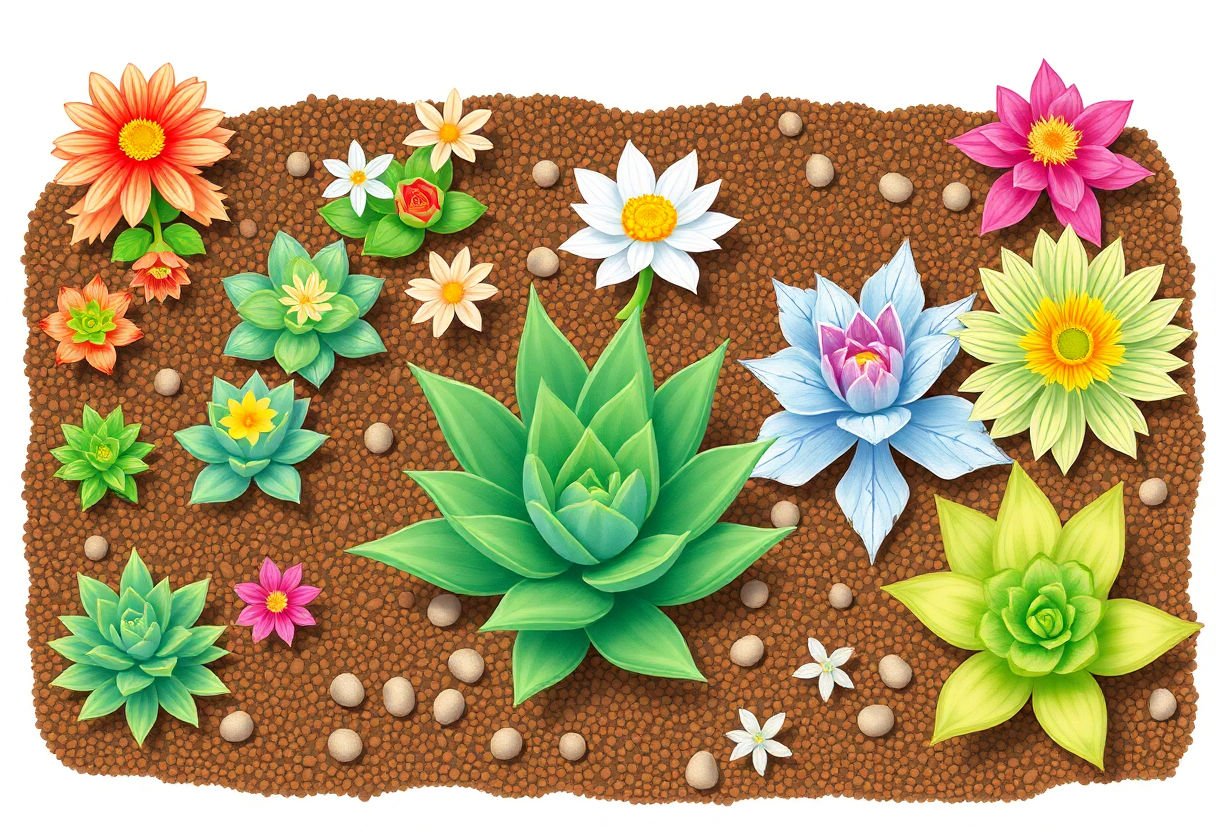Flowering succulents are a beloved choice for gardeners due to their unique aesthetic appeal and relatively low maintenance. However, achieving vibrant blooms requires more than just sunlight and water; selecting the right soil mix is vital. This article delves into the best soil options for these enchanting plants, highlighting the importance of well-draining soil, the balance of organic and inorganic materials, and how specific soil needs can vary among different species. By understanding these key factors, you can cultivate a thriving garden of flowering succulents that will captivate any observer.
Key Takeaways
- Flowering succulents thrive in a well-draining soil mix, which prevents root rot and promotes healthy growth.
- An effective soil mix for succulents includes a balance of organic materials like compost and inorganic ingredients such as perlite.
- The specific needs of different succulent species mean some adjustments in soil components might be necessary.
- Maintaining proper pH levels in the soil is crucial for ensuring vivid and frequent blooms in flowering succulents.
- Choosing between homemade and commercial soil mixes depends on the grower’s preference, availability of materials, and specific succulent requirements.
Understanding Flowering Succulent Needs
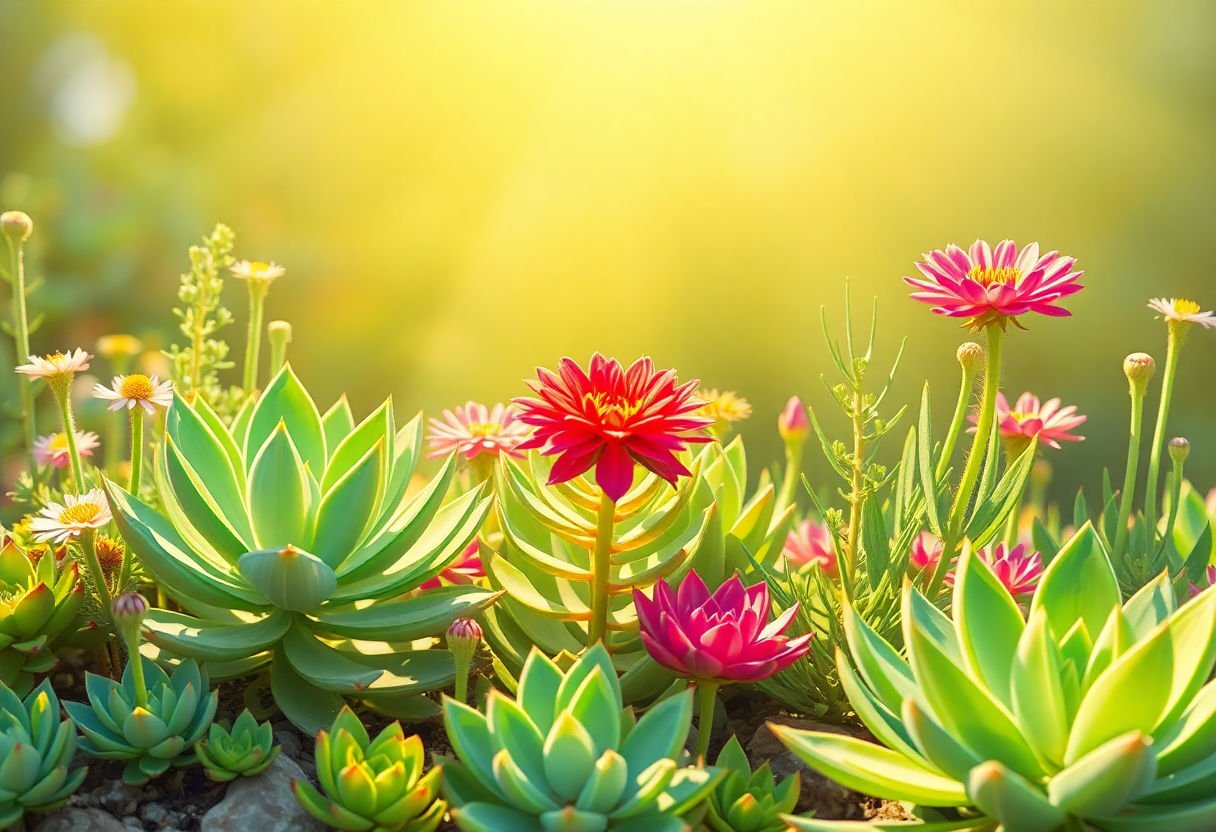
Flowering succulents, with their radiant and diverse blooms, require specific care to thrive. Understanding their unique needs is essential for any gardener aiming to nurture these resilient plants into full maturity.
Light Preferences: Most flowering succulents demand ample sunlight to flourish. Typically, they benefit from at least six to eight hours of direct sunlight daily. Indoors, placing them near a south or east-facing window maximizes their exposure, fostering healthy growth and vibrant flowering.
Water Requirements: These plants are adapted to arid climates and, as such, require careful watering. Overwatering is a common pitfall, potentially leading to root rot, especially when combined with poor drainage. Opt for a soak and dry method: water thoroughly, allowing the soil to dry completely between sessions. During active growth and flowering periods, slight increases in water frequency may be beneficial.
Soil Preferences: Flowering succulents thrive best in soil that mimics their natural environment. They require a well-draining soil mix, ideally combining organic matter like compost with inorganic materials such as perlite or coarse sand to prevent water retention. This combination not only supports robust root systems but also enhances nutrient absorption vital for blooming.
In essence, by meeting the specific light, water, and soil needs, gardeners can create an optimal environment for flowering succulents. This level of care ensures not only survival but encourages these intriguing plants to exhibit their full floral potential.
The Role of Drainage in Soil Mix
Proper drainage is a critical factor in crafting an effective soil mix for flowering succulents. These plants are highly susceptible to root rot if they sit in waterlogged soil, making the facilitation of water movement through the soil essential for their vitality. A well-structured soil mix allows water to moisten the soil sufficiently while ensuring excess moisture flows away from the roots swiftly.
To achieve optimal drainage, the soil mix should incorporate both organic and inorganic components that support a balanced environment. Coarse materials such as perlite or small stones can be mixed with soil to prevent compaction, thus encouraging water to drain more freely. This is particularly important as compacted soil tends to hold too much water, which not only leads to potential root decay but also limits the oxygen available to the roots.
Additionally, soil texture plays a significant role. A sandy texture within the mix can further enhance drainage. It facilitates rapid water movement while ensuring roots remain aerated. Integrating a gritty element like coarse sand offers the added benefit of supporting roots as they expand.
In practice, the ideal drainage system within a soil mix creates an environment where excess water drains in minutes, yet some moisture is retained to sustain the plant’s needs between watering. This precise balance is key to avoiding the pitfalls associated with poor drainage, ultimately fostering healthier and more vibrant flowering succulents.
Organic Components to Include
To cultivate flourishing flowering succulents, integrating organic components into the soil mix is essential. These components not only improve the soil’s nutritional profile but also enhance moisture retention without compromising drainage. Here are some primary organic materials to consider:
-
Compost: Rich in nutrients, compost serves as a fundamental building block for enhancing soil fertility. It boosts the microbial activity required for healthy root systems, thereby promoting robust plant growth and vibrant flowering. When preparing a succulent soil mix, aim for a modest proportion of compost—around 10-20%—to prevent the medium from becoming too dense.
-
Peat Moss: Known for its excellent moisture retention properties, peat moss can aid in maintaining a balanced moisture level in the soil. Despite its benefits, it should be used sparingly with flowering succulents, as these plants generally prefer drier conditions. A ratio of 5-10% peat moss can help achieve the desired nutrient absorption while supporting aeration.
-
Coconut Coir: This eco-friendly alternative to peat moss provides similar benefits with enhanced sustainability. Its fibrous texture aids in holding nutrients and water, creating an optimal environment for succulents. Coconut coir is highly favored for its ability to allow excess water to drain effectively, reducing the risk of root rot.
Incorporating these organic components appropriately ensures that the soil mix remains light and well-drained while supplying adequate nutrients. It’s crucial to balance these nutrients with proper drainage mechanisms to prevent adverse effects on succulent health.
Inorganic Ingredients for Optimal Growth
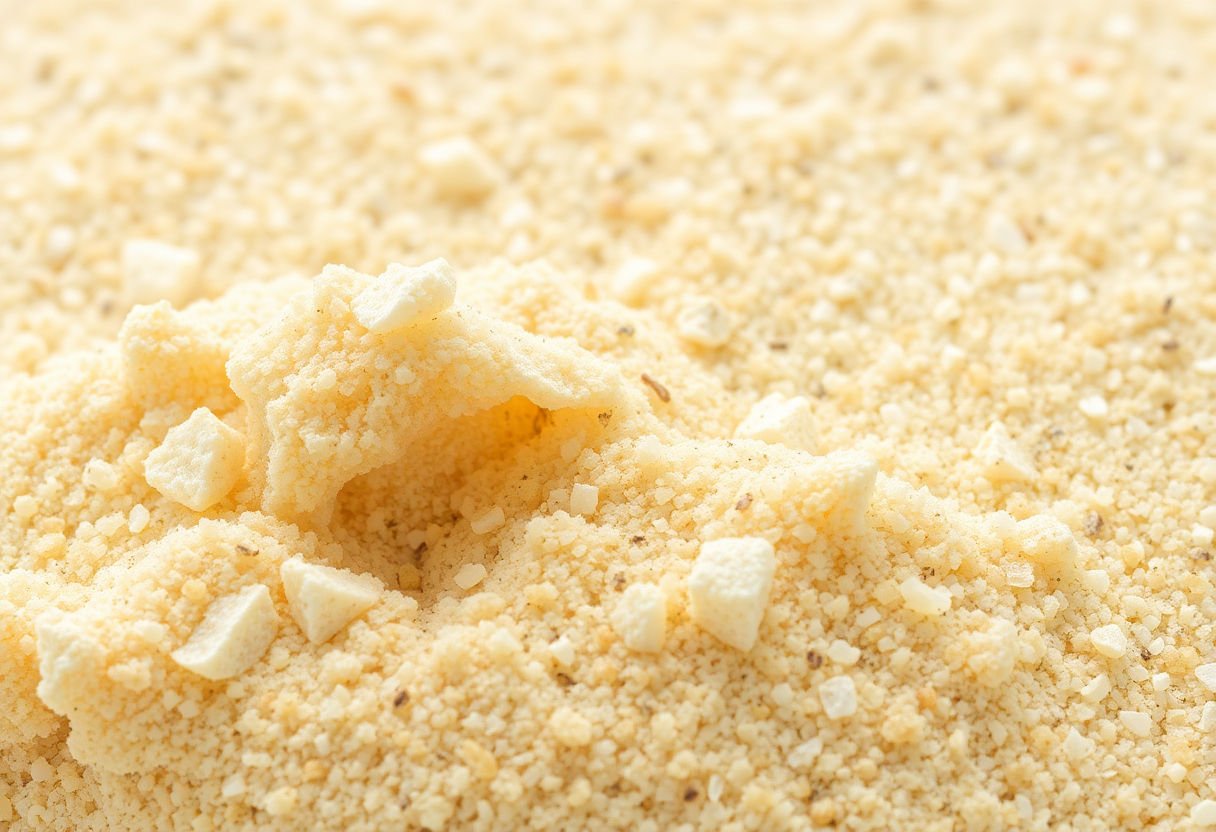
Inorganic components play a vital role in developing the perfect soil mix for flowering succulents, primarily by enhancing aeration and drainage. A well-structured soil reduces the risk of root rot and ensures that roots receive the necessary nutrients and oxygen.
One of the most commonly used inorganic ingredients is perlite. This volcanic glass is expanded through heating, creating a lightweight material that improves soil structure. Its porous nature allows water to drain efficiently while retaining some moisture for prolonged availability to plant roots.
Sand is another crucial component, particularly for succulents that thrive in desert-like conditions. Coarse sand, rather than fine beach sand, is preferred, as it ensures optimal drainage without compacting over time. Mixing sand into the soil increases its permeability, mimicking the natural habitat of many succulent species.
Vermiculite is often included to balance moisture retention with drainage. Although it holds more water than perlite, vermiculite provides vital aeration and keeps the soil mixture well-structured. This is beneficial for succulents that require slightly more moisture, making it an essential ingredient in diverse soil mixes.
Consider also using pumice, a highly porous volcanic rock, which enhances both drainage and aeration. Its larger particle size prevents soil compaction and is excellent for succulents that prefer dry conditions.
By incorporating these inorganic materials, gardeners can create a customized soil mix tailored to the specific needs of their flowering succulents, ensuring robust growth and flourishing blooms.
Special Considerations for Desert Native Species

Flowering succulents native to desert environments have distinct soil requirements that are crucial for their successful growth and blossoming. These adaptations are fundamental to their survival in arid climates, where water scarcity and intense sunlight are prevalent. Thus, when cultivating these species, it is vital to replicate their natural habitat as closely as possible.
Soil Texture and Composition
Desert-native succulents thrive in soil mixes that emphasize exceptional drainage and minimal water retention. The ideal mix should be coarse and gritty, incorporating a high percentage of inorganic materials such as sand, gravel, and perlite. These components help water pass quickly through the soil, preventing harmful root rot.
Nutrient Requirements
While desert soils are not typically nutrient-rich, including minimal organic matter like decomposed granite can offer essential nutrients without retaining excess moisture. It’s important to ensure the balance is maintained, as too much organic material can increase water retention.
pH Levels
Desert succulents often prefer slightly acidic to neutral pH levels, usually in the range of 5.5 to 7. Monitoring and adjusting the soil pH can optimize the nutrient availability, ensuring vibrant blooms. A simple amendment like crushed granite can gradually adjust pH levels while complementing the coarse texture of the mix.
Heat Tolerance and Insulation
Considering the heat tolerance of desert-native succulents, a soil mix can benefit from the addition of light-colored coarse sand. This not only aids in drainage but also reflects sunlight, thus moderating root temperature and emulating the thermal characteristics of a desert environment.
Providing these tailored soil conditions allows desert-native flowering succulents to thrive, showcasing their remarkable resilience and beauty even when far removed from their native habitat.
Homemade versus Commercial Soil Mixes
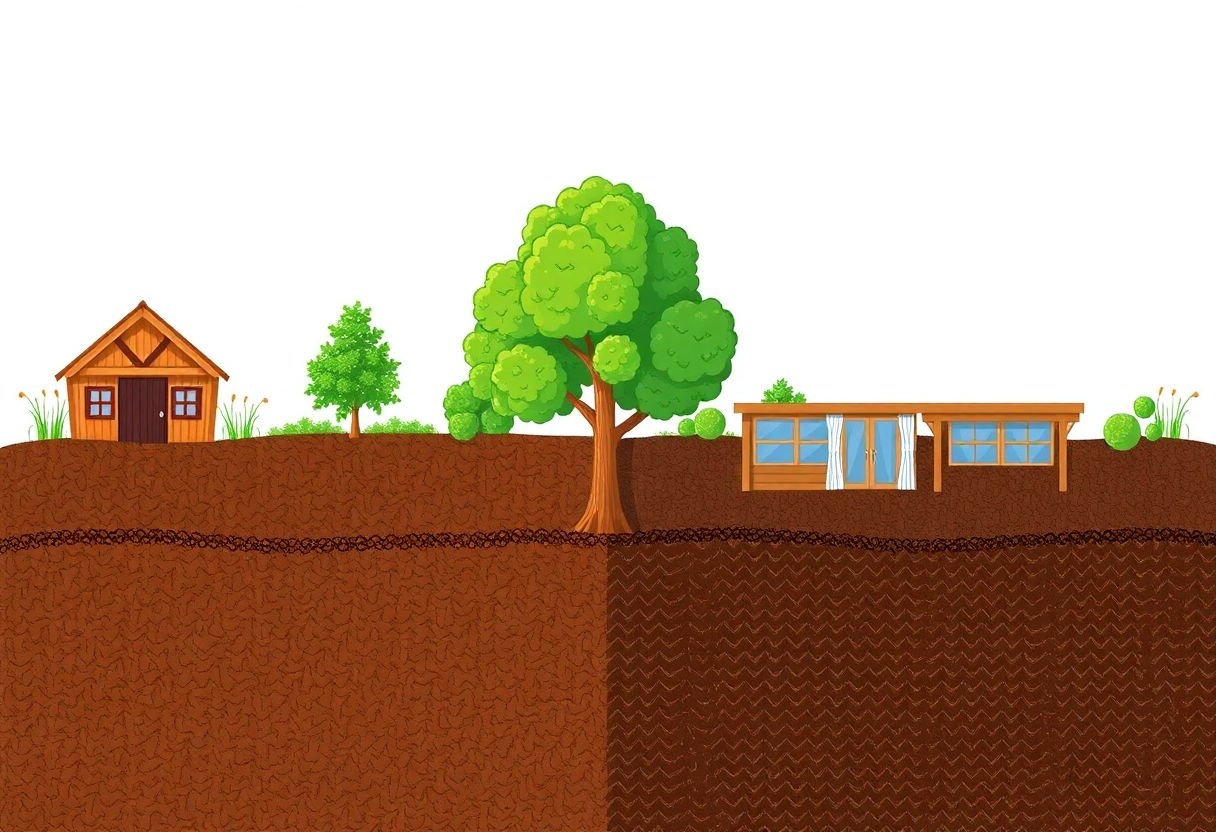
When cultivating flowering succulents, the choice between homemade and commercial soil mixes is pivotal. Homemade soil mixes offer the advantage of complete control over ingredients, allowing gardeners to customize components to meet the specific needs of their succulents. By using base materials such as coconut coir, perlite, and compost, one can ensure optimal drainage and nutrient content. The DIY approach also facilitates adjustments for different succulent species, promoting healthier growth and vibrant flowering.
Conversely, commercial soil mixes provide convenience and consistency. Premium store-bought mixes are often pre-formulated to cater to general succulent requirements, featuring a balanced combination of both organic and inorganic materials. These mixes can save time and effort, being readily available and reliable for those without the resources or inclination to create their own soil blends. However, the downside might be a lack of flexibility for specific plant preferences, which could be suboptimal for certain flowering succulents.
When choosing between these options, consider the following:
- Time and effort: Homemade mixes demand more preparation but allow for tailored customization.
- Cost considerations: While initial setup for homemade mixes might appear cheaper, commercial mixes offer value through convenience.
- Plant specificity: Homemade solutions are ideal for those cultivating specialized or diverse succulent collections.
Moreover, if opting for a commercial mix, it’s crucial to select a high-quality product that assures excellent drainage and nutrient profiles. Ultimately, the decision hinges on balancing the needs of your flowering succulents with personal preferences in gardening practices.
Common Mistakes to Avoid
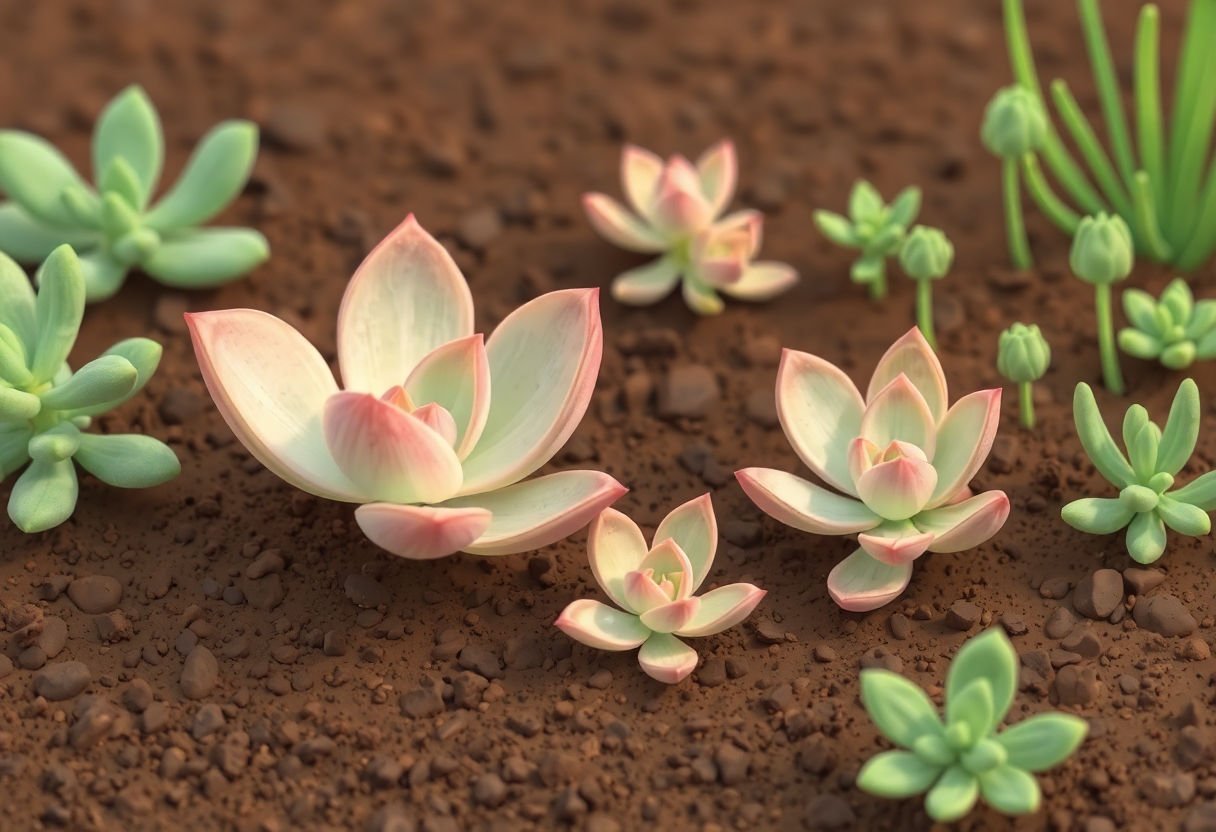
One of the most common mistakes in cultivating flowering succulents is using poorly draining soil, which leads to root rot and other health issues. Succulents require a soil mix that allows water to pass through quickly, preventing the roots from sitting in moisture. To avoid this pitfall, ensure your soil mix incorporates a significant proportion of inorganic materials, such as sand or perlite, to enhance drainage.
Another frequent error is neglecting the balance between organic and inorganic components. While organic matter like compost can improve soil fertility, too much can retain excess water, causing root damage. Aim for a mix where organic and inorganic ingredients are balanced to achieve optimal drainage and nutrient availability.
A critical oversight is forgetting to consider the specific needs of desert-native succulents. These plants often require specialized soil conditions that mimic their natural arid habitats. Adjust the soil mix for these species by increasing the proportion of gritty minerals such as gravel to ensure effective drainage and aeration.
Ignoring soil pH levels is yet another mistake that can hinder the growth of flowering succulents. Each succulent species may have unique pH preferences, and maintaining the correct acidity or alkalinity is crucial for nutrient absorption. Regularly test your soil pH and make necessary adjustments using materials like lime or sulfur to maintain a suitable environment for your succulents.
Lastly, opting for the convenience of pre-packaged soil mixes without consideration to their composition can be detrimental. Many commercial mixes designed for generic plants contain ingredients unsuitable for succulents. If using store-bought soil, ensure it’s specifically formulated for cacti and succulents, or modify it by adding additional inorganic materials to improve its structure.
Conclusion
Creating the best soil mix for flowering succulents requires a delicate balance of drainage, fertility, and pH adjustment. By understanding these essential aspects, gardeners can enhance the health and vibrancy of their succulents. Properly combining organic and inorganic materials will ensure optimal conditions, preventing common issues such as root rot. As gardening practices evolve, experimenting with soil mixes will offer avenues for improvement, promising resilient and flourishing succulent gardens. Stay mindful of your succulents’ specific needs, and don’t hesitate to tweak your approach to achieve the most beautiful blooms.
Frequently Asked Questions
What type of soil is best for flowering succulents?
The best soil for flowering succulents is a well-draining mix that combines organic materials like compost and inorganic elements such as perlite or sand. This blend ensures that water flows freely, preventing root rot, while also providing essential nutrients.
How often should I repot my flowering succulents?
Flowering succulents should generally be repotted every two to three years. Repotting refreshes the soil, providing new nutrients and ensuring the roots have enough space to grow, which supports healthy blooms.
Can I use regular potting soil for my flowering succulents?
Regular potting soil is usually too dense for succulents as it retains too much moisture. It’s advisable to mix it with sand, perlite, or another inorganic material to improve drainage and aeration.
How do I adjust soil pH for optimal flowering?
Monitoring soil pH is crucial, as most flowering succulents thrive in slightly acidic to neutral soils (pH 6.0-7.0). If adjustments are needed, adding organic matter like peat moss can help lower the pH, while lime can increase it.
What are the signs of improper soil mix for flowering succulents?
Signs of an unsuitable soil mix include wilting, discoloration of leaves, and poor blooming. These symptoms may indicate inadequate drainage or poor nutrient availability, necessitating a change in the soil composition.
